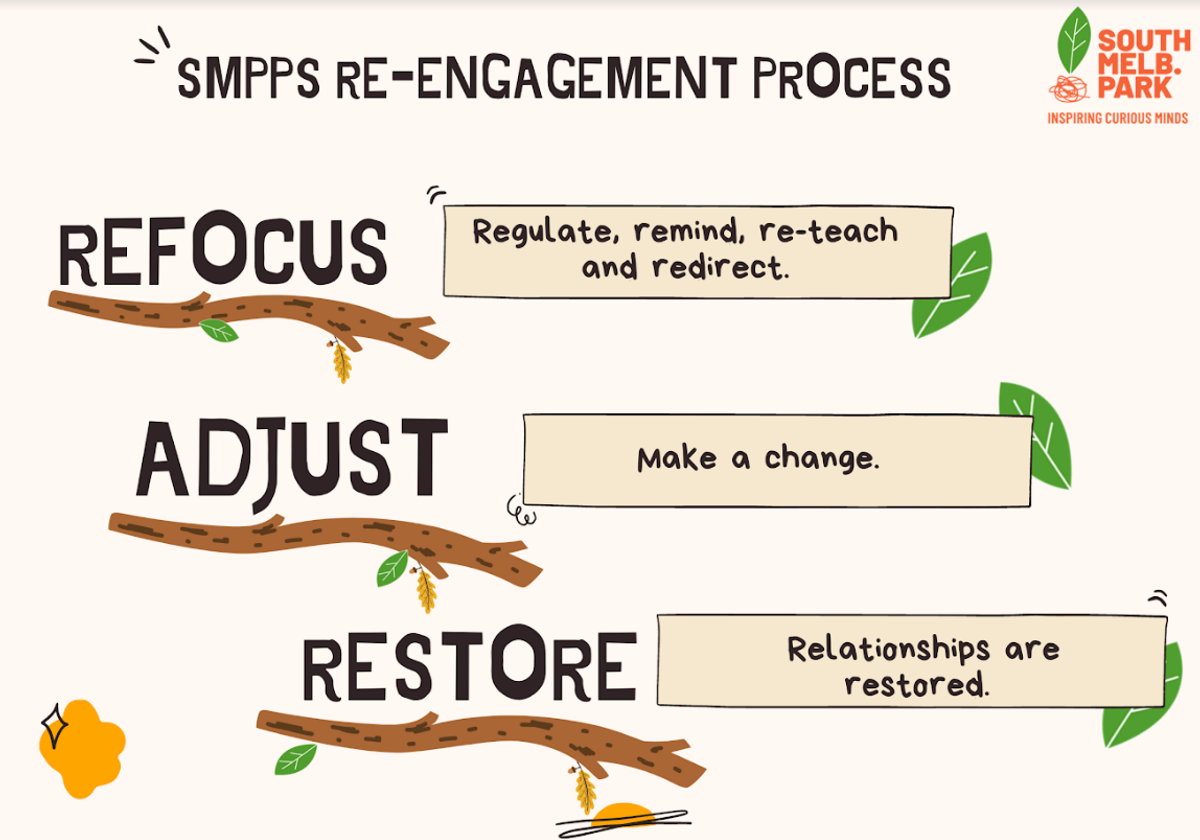From the
Assistant Principal
INSPIRING CURIOUS MINDS

From the
Assistant Principal
INSPIRING CURIOUS MINDS
Dear SMPPS families
What a wonderful sunny and warm fortnight it has been!
We are continuing to build on the whole school learning around our new SMPPS Re-engagement Process and this week the staff undertook further professional learning. Our Annual Implementation Plan includes a focus on Explicit Teaching as a High Impact Teaching Strategy to embed learning as well as wellbeing and engagement. I would love to share with you what we are learning and the language the students are hearing and using to talk about ‘behaviours’ and wellbeing. I will take a spotlight on each part of our framework each fortnight.
You will see in our process, as part of ‘refocusing’ there are a few steps within. Let’s take a deeper look at ‘regulate’.
Regulation and dysregulation are terms that are becoming much more known and used to describe when we are in those ‘yellow, blue or red zones’. We may more commonly describe this as feeling ‘off’, upset, angry, frustrated and may see this manifest in many ways both as adults and children, including in challenging behaviours. We often want to jump straight to ‘fixing’ or ‘reasoning’, however when we are in this highly dysregulated space, we first have to allow the body to regulate and move the adrenalin and cortisol out of the system.
As adults we need to explicitly teach our young people how to regulate and also model self-regulation ourselves. This begins with co-regulation. It is not a one-size-fits-all method and we will all have moments where this is challenging, but building this into our daily practice as adults around little ones will hopefully bring some zen into both our own and their lives!
In a nutshell:
When the child is regulated and able to engage in discussions (short moment, minutes, hours or a day) you can then work through what happened and start reasoning through alternative responses or ‘fixes’.
Example, a child is crying uncontrollably and upset about something we feel seems really small e.g. a lost toy. “I hear you, you loved that toy a lot and it’s really sad when we love something and it’s gone.” Can be a great way to start, where our initial instinct may be to say, “Don’t worry, it’s just a toy” or “I’ll get you a new one!”.
Strategies:
Theory
Deeper reading (articles):
I really love this, give me more!




Trish Wan
Assistant Principal